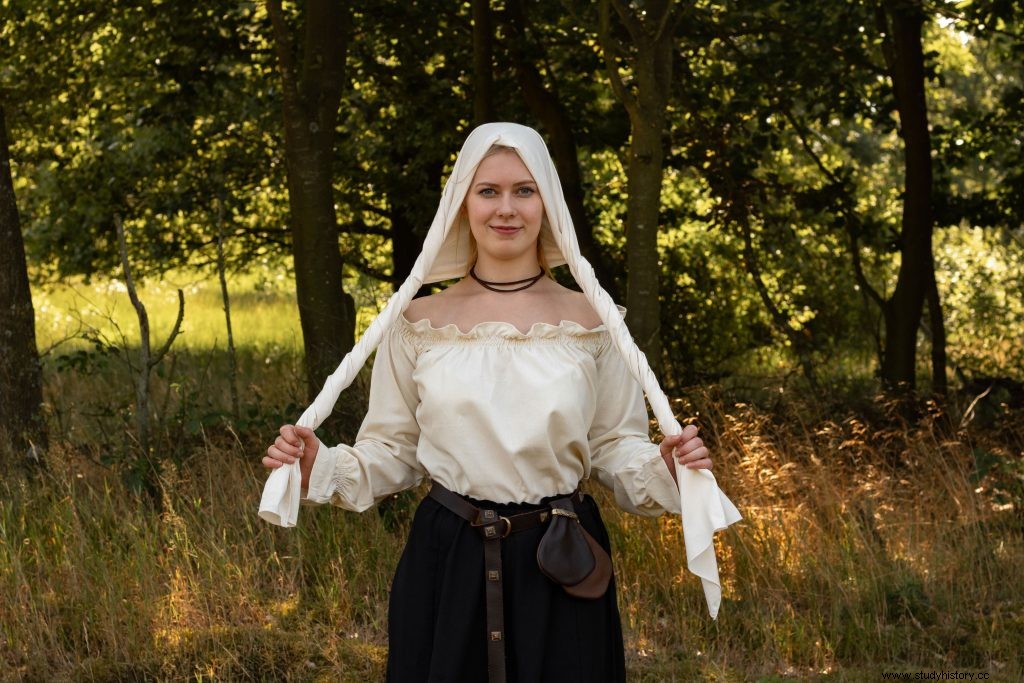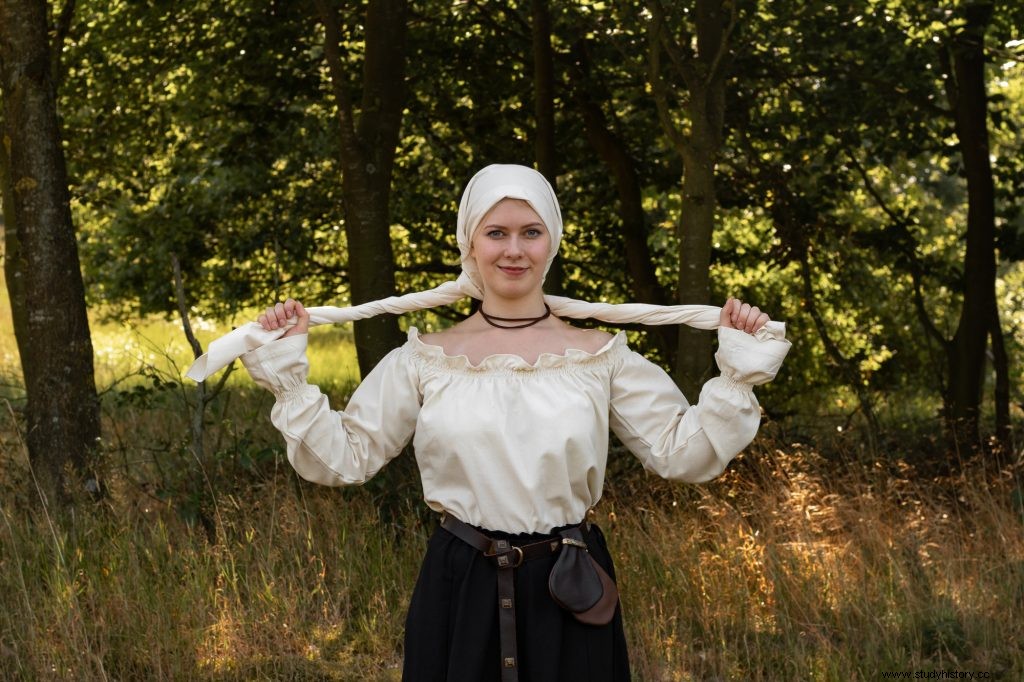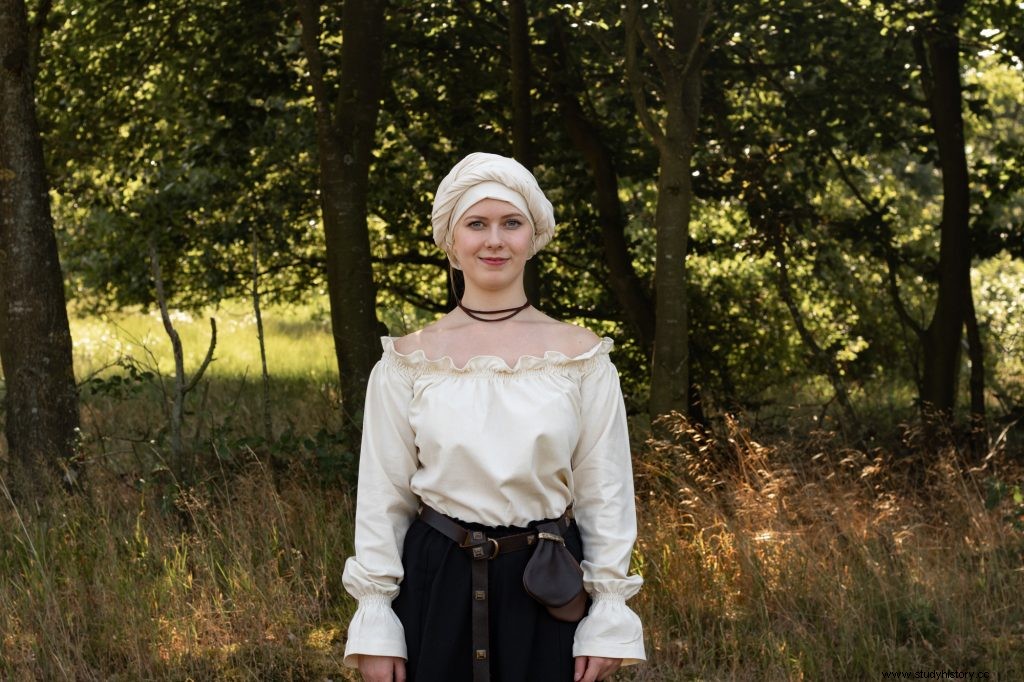Protection from parasites, dirt and weather:In the Middle Ages it was customary to cover your head. In addition, it was considered improper for married women to show themselves "topless" - i.e. without a head covering - in public. No wonder that countless variations and trends have emerged over the centuries, from the bonnet to the pennant to the veil. Today we show you a way to tie a headscarf quickly and nicely.
You need this
In order to tie the headscarf in this form, you only need – hard to believe – a headscarf. When properly tied, it holds up very well, even when moving, so no clasps or the like are needed. Ours has the dimensions 180 x 50 cm, which is ideal for this wrapping technique.
How to tie the headscarf step by step
Step 1

Drape the cloth over your head as shown in the picture. The two ends should be about the same length. The long side of the headscarf is folded slightly inwards at the height of your forehead.
Step 2

Now twist the two ends until the twisted part reaches your chin.
Step 3

Now swap the two ends of the scarf behind your head.
Step 4

Fold the two ends forward along the ear and cross them back across the forehead. Now you push it under the twisted strand that has already been laid. Finally, fix the scarf at the back of your head by tucking the tips in the neck at the hairline under the entire headscarf.
Done!

Other headgear options
A headscarf is great because you can use it to tie many different medieval headgear, such as the binding presented here or even a veil. We have already shown another technique in the blog post about pennants.
You can also cover your head with a bonnet. Coifs, also Coiffe or Coif called, were worn by both men and women. Most have two ties to tie them under the chin. In that case, that would also be the historically correct version. However, if you see such a medieval hood at events, it is usually worn openly, even by reenactors. You can of course decide for yourself how you handle this.
Last but not least, you have the option of wearing a hood, which is a kind of hood that extends over the shoulders. It keeps both head and shoulders warm and also protects against rain and wind to a certain extent. In the Middle Ages, however, women probably only wore them when travelling.
